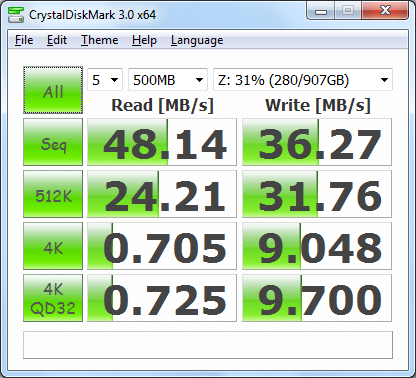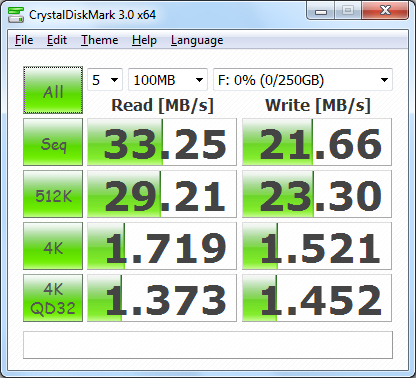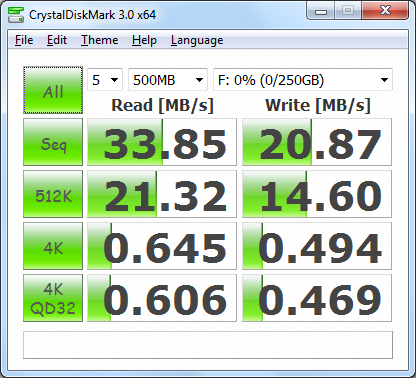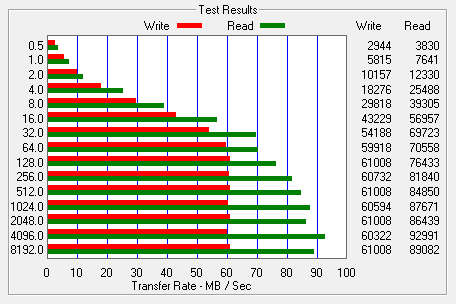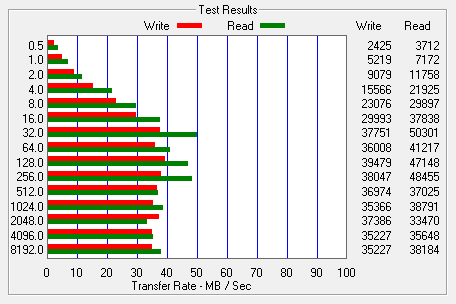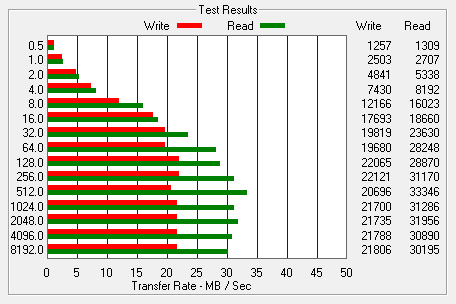The test system used in this review was an HP dc7900. The computer came equipped with an Intel Core 2 Duo E8400 3.0GHz CPU, 2GB of DDR2 800MHz memory, Seagate Barracuda 7200.10 ST3250310AS 250GB SATA hard drive, NVIDIA Quadro FX570 256MB PCIe graphics card and Intel 82567LM-3 gigabit network card. For the operating system, I installed a fresh copy of Windows 7 Enterprise.
To test the performance of the LG N1T1, I ran a series of benchmarks using CrystalDiskMark 3.0, ATTO Disk Benchmark 2.34 and Iometer. The tests were first run with the device configured as an NAS and then again in its external hard drive mode. To eliminate any network bottlenecks, the N1T1 was connected directly to the computer using a CAT6 ethernet cable.
CrystalDiskMark 3.0:
First, I ran a few quick tests using CrystalDiskMark. This benchmark tool measures the performance of a storage device by testing its sequential read and write speeds as well as its random read and write speeds using blocks 4KB and 512KB in size. The test was first run using a 100MB file and then a 500MB file.
The N1T1 performed fairly well when configured as a NAS device. In our tests, it reached speeds as high as 48 MB/s when reading and 41 MB/s when writing. As you can see, the N1T1 wasn't nearly as fast when configured as an external hard drive. When connected to the computer using USB 2.0, the unit reached read and write speeds of 33 MB/s and 21 MB/s, respectively.
ATTO Disk Benchmark 2.34:
I also used ATTO Disk Benchmark to test the N1T1's sequential read and write speeds. The tests are run using blocks ranging in size from 0.5KB to 8192KB and the total length set to 32MB and 256MB.
When configured as an NAS and the total block length set to 256MB, the N1T1's read speed topped out at about 50 MB/s and its write speed at 39 MB/s.
Iometer:
Lastly, I ran a series of tests using Iometer. This tool can be configured to benchmark a number of things. In this case, I used it to measure the N1T1's sequential read and write speeds using blocks ranging from 512B to 2MB in size.
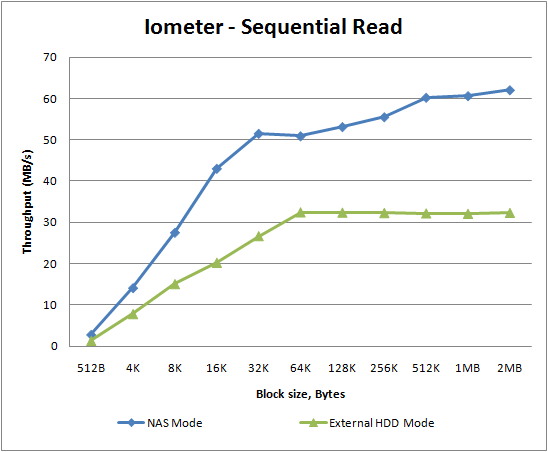

By now, it shouldn't be too surprising that the N1T1 was faster when configured as an NAS. When tested with Iometer, the unit was able to read at speeds as high as 62 MB/s and write at 42 MB/s.



